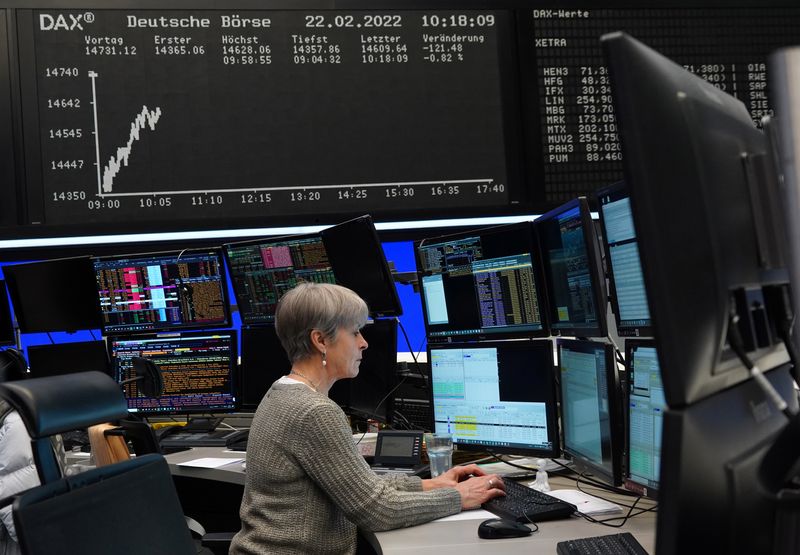A look at the day ahead in European and global markets from Wayne Cole.
Singapore's central bank sprang the surprise of the Asian day by halting its tightening cycle when markets had expected a sixth straight round of restraint.
The Monetary Authority of Singapore (MAS) said there was enough currency appreciation - controlling the SGD is its primary policy tool - already in the pipeline to ensure inflation slowed sharply as the year progressed.
It also sounded more downbeat on the economic outlook as GDP growth missed forecasts with a rise of just 0.1%.
The MAS is a famously conservative institution so pausing was a big step, and joins peers in Australia, India, Canada and South Korea among others.
Markets still imply a two in three chance the Federal Reserve will hike its rates to a 5.0-5.25% range in May, but see that as the end of the line for this cycle. Indeed, the possibility of an easing is envisaged from July and rates at 4.25-4.5% by December.
Supporting the dovish cause was the soft reading on March U.S. producer prices, and retail sales later today will likely do the same.
Median forecasts favour a dip of 0.4% but risks seem tilted to the downside with Goldman Sachs (NYSE:GS) warning of a sharp pullback in spending following the collapse of SVB.
Analysts at NatWest Markets are tipping a drop of 1.3% for March, the weakest performance since July 2021.
Market pricing for future Fed cuts stands in stark contrast to the outlook on the European Central Bank, where another 50 basis points of hikes are in the curve with no easing this year.
This divergence has seen the spread between U.S. 10-year yields and German bunds shrink to its smallest in two years near 100 basis points.
A break under 100bp would leave the spread at its narrowest since early 2014, when the euro was up around $1.3600.
The single currency duly made a one-year high of $1.1075 in Asian hours and is up across the board in a blow to many travel plans. It made a five-month top on the yen, a 10-month peak on the Singapore dollar and a 17-month high on the Australian dollar.
The U.S. dollar is now on track for its biggest weekly fall in three months and has weakened five weeks in a row - a run not recorded since mid-2020.
Key developments that could influence markets on Friday:
- Earnings season underway with Citigroup Inc (NYSE:C), Wells Fargo (NYSE:WFC) and JPMorgan Chase & Co (NYSE:JPM)

- ECB's Christine Lagarde and Fabio Panetta participate in IMF/World Bank Spring meetings in Washington, along with many other central bankers
- Fed Governor Christopher Waller speaks on the economic outlook